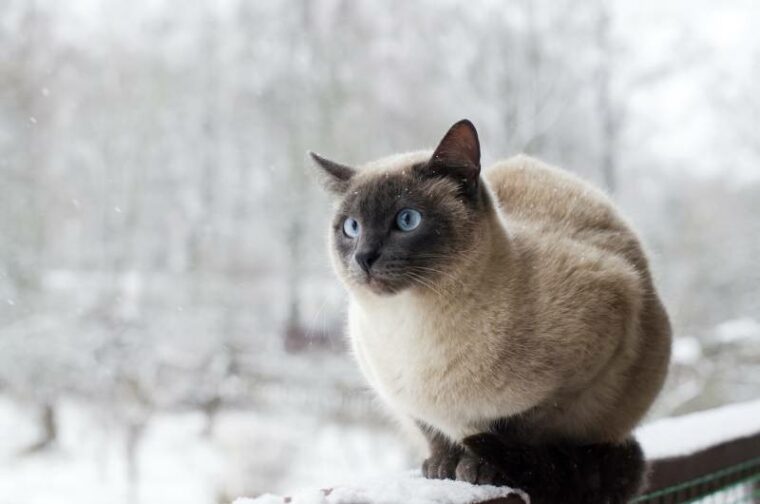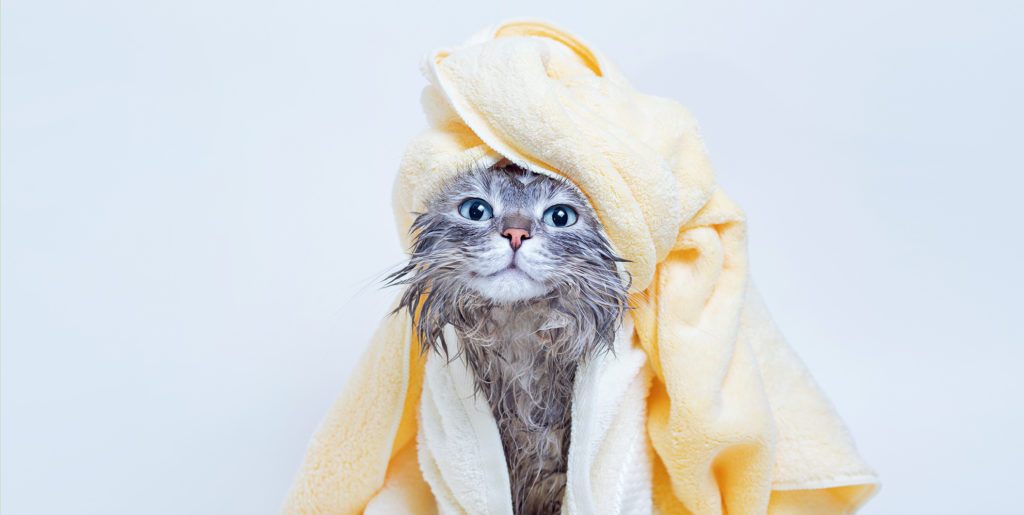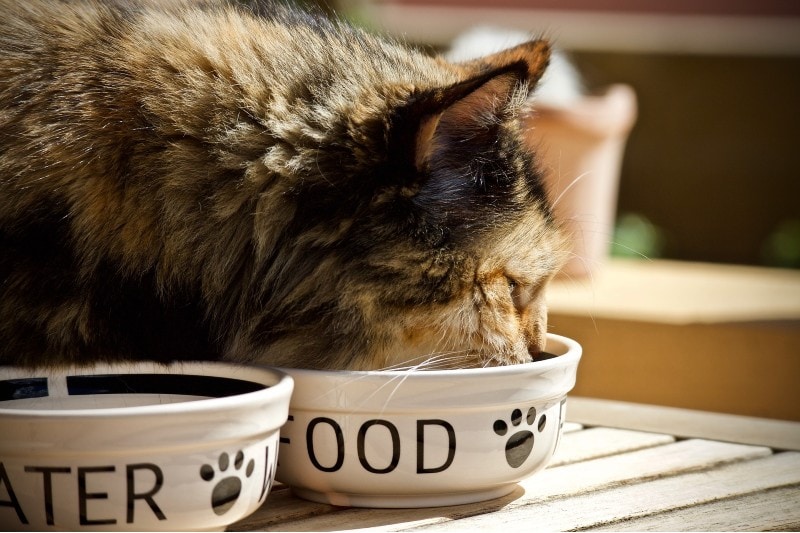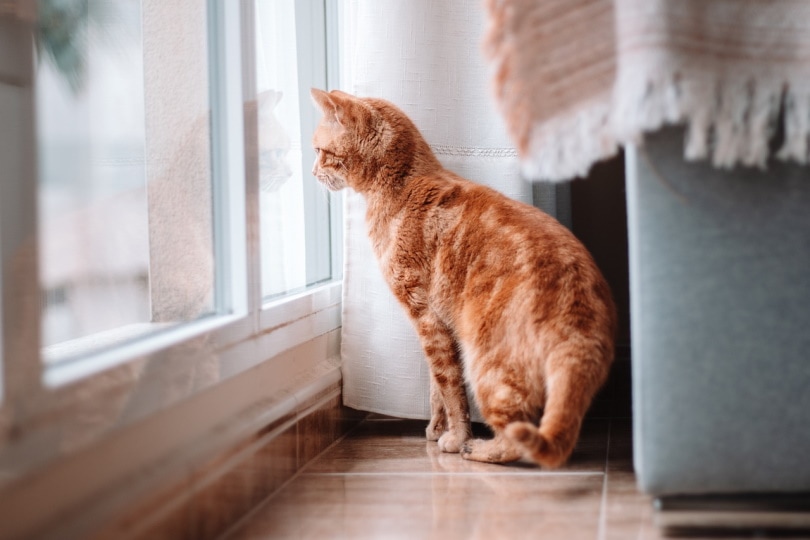
Every winter, hundreds of cats die due to exposure. Of course, most of these are strays and lost felines without anywhere to get warm. However, some well-loved cats find themselves in too-cold weather or trapped in snowstorms.
Plus, even if your cat doesn’t get too cold, there are other hazards in the winter, too. Sickness is often more likely in the colder months. Plus, salt used to keep snow away can damage your cat’s paws. Simply put, winter isn’t the best time to be a cat!
Luckily, there are many things you can do to keep your cat warm and cozy during the winter months.
The 10 Winter Safety Tips for Cats
1. Towel Dry When Necessary

Every time your cat comes in, we recommend towel-drying them to help remove snow and moisture. Cats will become cold faster if wet, and they may have difficulty warming up if snow is stuck to their underbelly and paws. Therefore, use a towel to dry your cat promptly and remove as much snow as possible. Be sure to pay attention to the space between each toepad, as snow tends to build up in this area.
2. Consider a Humidifier
The dry heat of your home during winter can cause itchy, flaky skin. While not all cats are bothered by the dry heat, those with skin problems already may have a tougher time in the winter. Therefore, we recommend getting a humidifier when possible. You don’t necessarily need a humidifier in every room. However, having one in the areas your cat frequents can help prevent skin and respiratory issues.
3. Rinse Your Cat’s Feet

The salt often added to the road and sidewalks during winter can cause your cat’s feet to dry out. If regular exposure occurs, your feline’s paws may split and crack. Furthermore, much of this ice isn’t edible. Sometimes, it may even have chemicals added to it. Therefore, you don’t want your cat licking this salt off of its paws.
The easiest way to accomplish this is to invest in a pack of cat-safe wipes. You should leave these by the door where your cat comes in. Then, wipe your cat’s feet after every adventure outside.
Of course, your cat will probably complain at first. However, with lots of praise (and maybe some treats) your cat should get used to the routine.
4. Get Paw Protectants
There are some ways you can protect your cat’s feet from the ice and snow. Petroleum jelly is one of the most accepted and easily accessible ways to keep the snow and salt from directly touching your cat’s paws. You’ll still need to clean your cat’s paws when they come in (unless you want petroleum jelly all over the floor). However, this method is more suitable for longer times outside.
Alternatively, you can use booties to offer even more protection. However, we don’t recommend leaving your cat unsupervised with these on, especially outside. Booties restrict your cat’s use of their claws, which can be an issue if another cat or larger predator shows up. Furthermore, many cats do not like booties, and take a while to get used to them.
5. Provide Extra Food

If your cat spends much time outside, they will burn more calories. Therefore, your feline may need more food in the winter than in the warmer months. However, this isn’t always set in stone. We recommend keeping an eye on your cat’s body condition. If your cat begins to lose weight or acts extra-hungry, you may need to increase their food intake.
Of course, if your cat is already overweight, don’t increase their food without talking to your veterinarian first. Burning these extra calories may be exactly what they need.
6. Offer Shelter
Be sure that your cat has somewhere warm to get away to. Even if you let your cat inside when they ask, you may not always be there to let them in. Therefore, we recommend considering a shelter of some sort outside that your cat can easily access.
Don’t put fabrics that aren’t waterproof inside the shelter, however. Your cat will likely track snow or water in, which will only get the fabrics wet. Then, your feline will only get colder. Instead, consider water-proof fabrics or even insulators like straw.
7. Don’t Leave Your Cat Outside

Even if you follow all of these tips, we don’t recommend leaving your cat outside in colder temperatures. If it is too cold for you, it is probably too cold for your pet. Bring your cat inside whenever it becomes cold or snow is in the forecast.
8. Double-Check Houseplants
Many winter plants are toxic to cats and should be avoided. For instance, poinsettia plants turn into an irritating liquid when chewed. Not only can this irritate your cat’s mouth, but it can also cause stomach issues.
Mistletoe is another common plant that is toxic to felines. Be sure to double-check any winter plant before bringing it home. You don’t want to accidentally introduce your cat to a toxic plant.
9. Be Cautious with Space Heaters

While space heaters keep our homes warm, they can also cause burns. Some space heaters get extremely hot. If your cat rubs up against one, there is always the chance of a burn. Of course, because cats like to sleep in warmer places, they may be more likely to get burned than other pets.
Furthermore, if your cat knocks over the heater, there is also the chance of other materials getting too hot. In some cases, this can cause a house fire.
10. Choose Decorations Wisely
Many decorations are attractive to cats, like tinsel. Many cats will attempt to play with these decorations. While this isn’t necessarily bad, it can lead to accidental ingestion. Of course, your cat consuming things that aren’t consumable is a problem. In some cases, this may cause intestinal damage or lead to an obstruction.
Both of these issues require veterinary attention. Therefore, be extra careful about your decorations during the holiday season.
Conclusion
Wintertime can be dangerous for cats. Of course, it is cold. This drop in temperature can lead to all sorts of issues, including death. However, there are other dangers, too. Holiday decorations, space heaters, and salt can lead to potential illnesses and complications. Therefore, there are many safety steps you should consider taking this winter to keep your cat safe.
Many of these safety steps are completely free. They just require doing things a bit differently. Therefore, there is little reason not to implement them this season.
Of course, all cats are different so consider your cat’s needs and behaviors carefully. Some cats spend all their time inside so you may not have to worry about road salt. However, you may have to worry more about exposure to things indoors, like space heaters or decorations.
See also: 12 Super Bowl Party Safety Tips for Cats
Featured Image Credit: Rodica Vasiliev, Shutterstock






